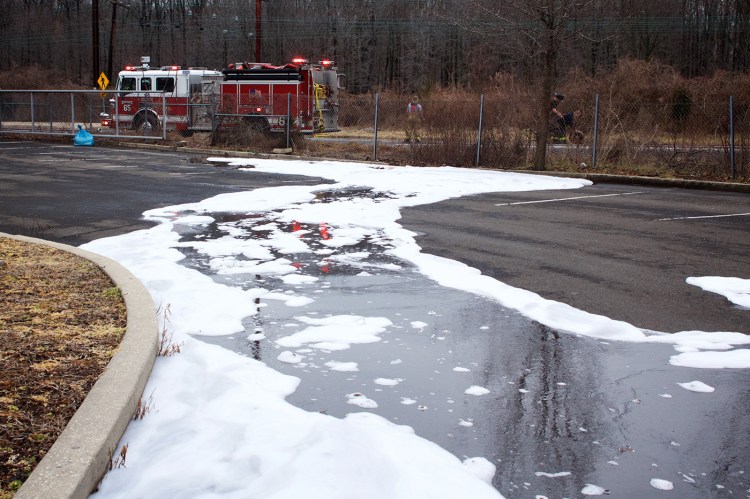AUGUSTA — Gov. Janet Mills issued an executive order Wednesday that creates a task force to determine the scope of contamination in Maine from a chemical compound linked to cancer and other health problems.
The chemicals, known as perfluoroalkyl substances or PFAS, were used for decades in nonstick cookware, stain-resistant carpeting, food packaging and firefighting foam. While PFAS are no longer manufactured in the U.S., there is growing concern about drinking-water contamination – particularly near military bases – from a long-lasting chemical that accumulates in the body over time.
Maine has several known PFAS contamination sites, including the former Brunswick Naval Air Station and in a source well for a York County water district. But there are likely other sites, given the prevalence of the chemical.
“That is why it is important for the state to identify any locations in Maine where PFAS are prevalent; examine its effects on drinking water, freshwater fish and marine organisms; and take steps to create and implement treatment and disposal options,” Mills said in a statement. “The EPA is dragging its feet on the issue, leaving states to take the lead.”
The task force created by Mills would review information about known locations of PFAS contamination, identify sources of contamination, explore treatment or disposal options, and examine potential contamination in fish and marine organisms. The group will also determine how much PFAS-containing firefighting foam is around Maine and identify potential alternatives.
The group is charged with issuing a written report to Mills “as soon as reasonably practicable.”
“We applaud Governor Mills for taking swift action to stem this serious threat to public health and Maine’s environment,” said Michael Belliveau, executive director of the Environmental Health Strategy Center. “It’s tragic that some Mainers were exposed for years to unsafe levels of these so-called ‘forever chemicals’ in drinking water and milk without their knowledge or consent. This is likely the tip of the toxic iceberg, since all sources have not been fully investigated.”
There is growing worldwide concern about the health impacts of PFAS, a group of man-made chemicals widely used in the United States since the 1940s because of their ability to repel water and grease. Sometimes referred to by other acronyms such as PFOS or PFCs, the chemicals are effective at smothering fires and were formerly used to create non-stick surfaces on Teflon cookware, stain-resistant carpet, microwave popcorn bags and pizza boxes.
But those same qualities mean PFAS linger in the environment and in the human body before breaking down. A growing body of research has shown PFAS may affect development or behavior in children, interfere with hormones, increase cholesterol levels and increase the risk of developing cancer.
Last month, the U.S. Environmental Protection Agency announced it will start work by year’s end on developing health standards for PFAS in drinking water supplies. The U.S. Centers for Disease Control and Prevention also plans to conduct exposure assessments in communities near existing or former military bases because of the widespread use of PFAS, particularly in firefighting foam.
But critics said the Trump administration is moving too slowly on the issue. And a bill pending in Congress, which is co-sponsored by Maine Rep. Chellie Pingree, D-1st District, would require the EPA to designate PFAS chemicals as a hazardous substance within a year.
Maine has several documented PFAS contamination sites.
The Navy has identified several areas of the former Brunswick Naval Air Station with elevated levels of the chemical, although 2017 tests showed little to no contamination of private wells outside of the base. The former Loring Air Force Base in Aroostook County also has areas contaminated with PFAS.
Not all PFAS contamination sites are military.
In 2016, the Kennebunkport, Kennebunk and Wells Water District shut down one well after tests revealed elevated PFAS levels. While the levels were below the EPA’s “health advisory” level of 70 parts per trillion, the water district installed an activated carbon system to remove PFAS from the water. It is believed that the chemicals leached into the well from contaminated sludge and industrial “fly ash” spread on nearby farm fields.
Just to the south, the former Pease Air Force Base in Portsmouth, New Hampshire, has been in the center of a years-long controversy over PFAS contamination. In addition to the thousands of workers at the base, children were believed to have been exposed to the chemicals through the drinking water at daycare facilities that used contaminated wells.
Pease is expected to serve as the model site for nationwide health studies on PFAS.
Kevin Miller can be contacted at 791-6312 or at:
Send questions/comments to the editors.



